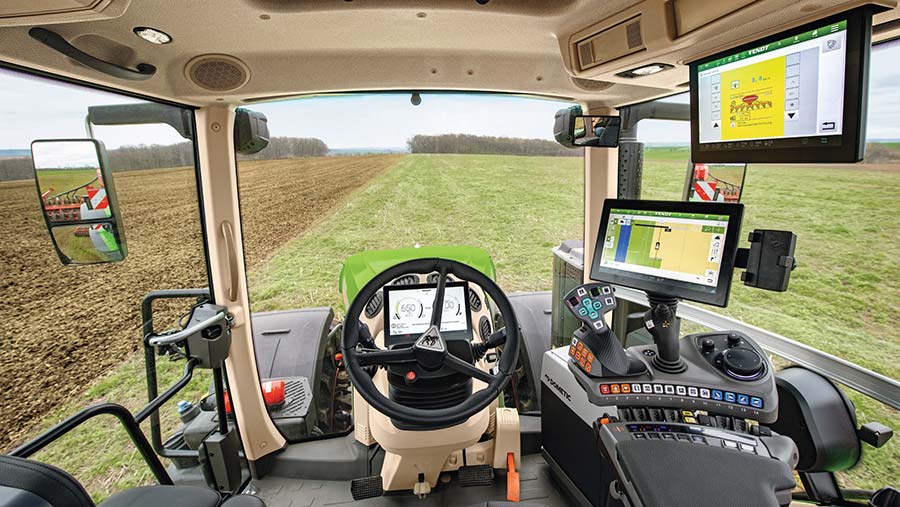Opinion: Knowledge transfer key to optimal field performance
 Fendt One cab upgrade © Fendt
Fendt One cab upgrade © Fendt When looking to increase crop yields, a stable and optimal biological environment is the ultimate goal.
This encompasses many factors, such as soil health, water retention, biodiversity and chemical composition. But with so many factors at play, it can be hard to know which should be the priority.
We can’t determine what to prioritise without communication, so to ensure that our businesses thrive, we must transfer knowledge more as an industry.
See also: How farm data integration could improve N use efficiency
About the author

Sagi Katz is vice-president of agronomy at Agmatix, a data services company that uses science and artificial intelligence to convert agronomic data into actionable insights at field level. Here he explains how using agro-infomatic tools can help improve field-level performance.
What’s more, this communication of data will enable us to be more sustainable and help us to solve food poverty on a global scale.
Driven forward by the need to comply with new regulations, increase yields in a sustainable way, futureproof the farm and drive profitability, more and more farmers are looking at data as a solution.
By considering available research, including data gathered through individual field trials, we can determine which factors have the largest effect on yield and crop quality.
In time, this data can be aggregated on a regional, national or international basis.
Conducting a field trial can be a complex undertaking. But, as the medium in which you grow your crops, the factor most likely to determine crop quality and yield is soil health.
When looking to assess this, the best indication is biological activity in the soil – otherwise known as biodiversity.
A highly biodiverse environment brings many additional benefits, ultimately improving yield and crop quality.
Soil nutrition
Another important factor to measure for soil health is chemical composition. This can be relatively quick and easy to improve through the correct nutrition plan.
That said, it does depend on the chemical you’re looking to alter. For example, increasing the amount of carbon in the soil is much harder than increasing nitrogen.
Once results are gathered, the most effective way to begin implementing changes to optimise your soil nutrient balance is through the use of an agro-informatic tool.
These tools can determine the right amount of chemical fertiliser and optimal application time, factoring in all the variables of your specific field.
These tools can also advise growers on farming practices that will aid the development of a highly biodiverse environment, such as no-till agriculture, or the cover crop approach.
Biodiversity and its benefits vary greatly depending on the organism present. However, one overarching theme is that the presence of one organism encourages the presence of others, creating a positive “snowball” effect.
If you get the balance of this ecosystem right, yields will increase year on year, and carbon emissions will simultaneously decrease.
Impact
Agro-informatics tools can also provide information on the impact these regenerative farming practices will have on yield and crop quality.
Not only this, but they can help to track carbon emissions, allowing farmers to more easily make use of carbon credit schemes.
In agriculture, the decisions you make today will have a lasting impact for months, and even years down the line.
So, it’s important to drive your decisions with high-quality data, collected through well-planned, accurate field trials.
Ultimately, if we are to ensure the long-term success of the industry, as well as reduce our impact on the environment in a meaningful way, we must share this data with fellow researchers and farmers through open data programs.
Communication is the key.
